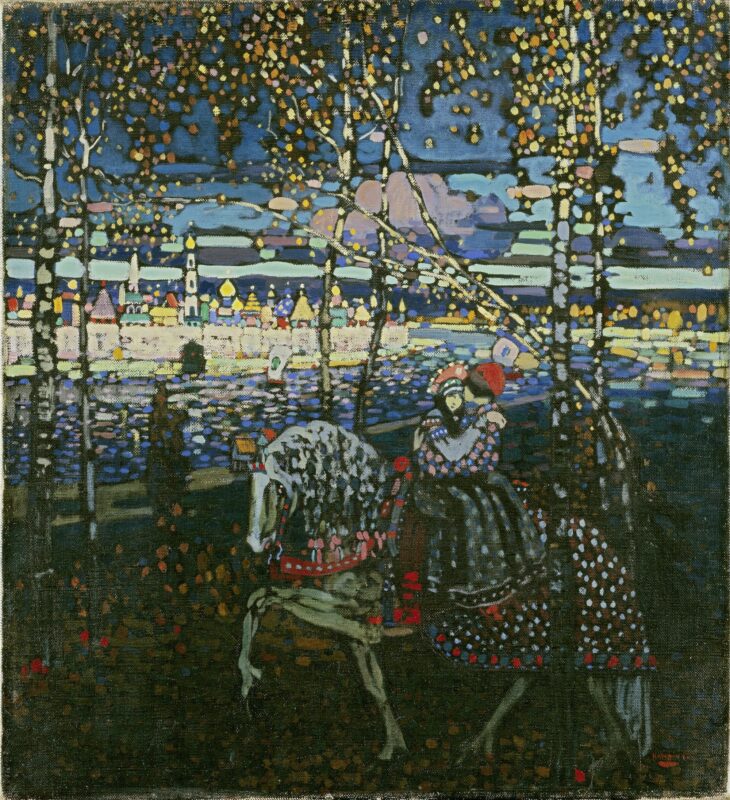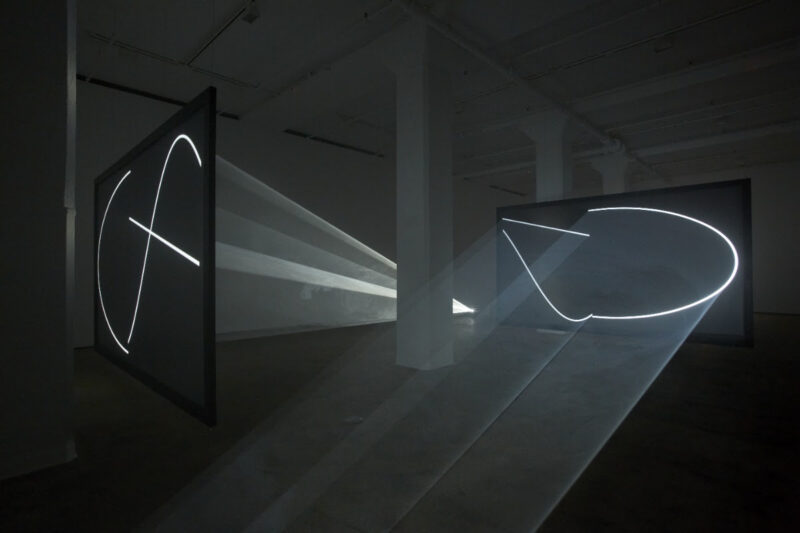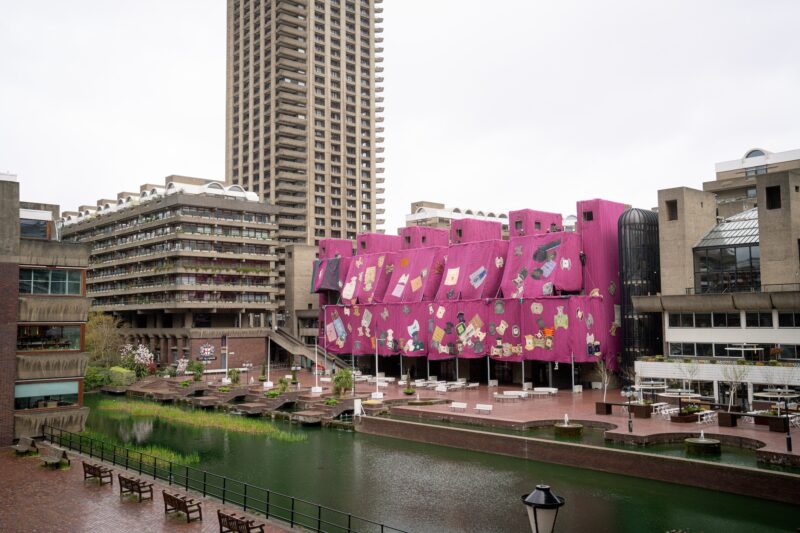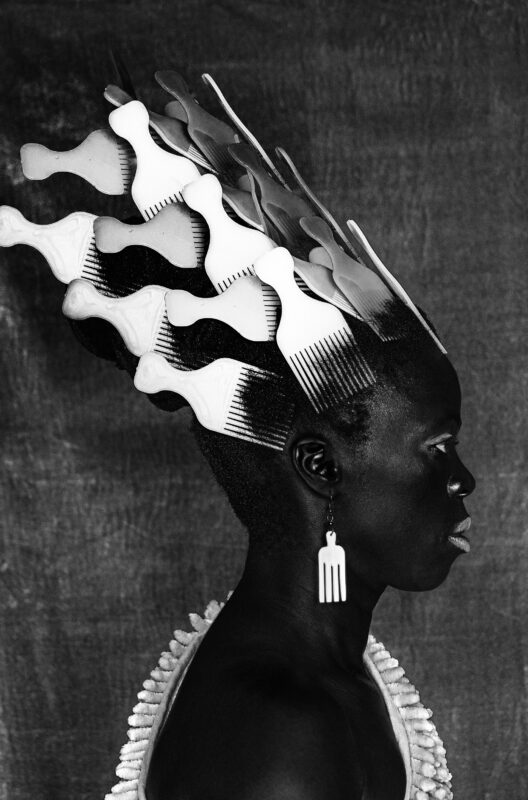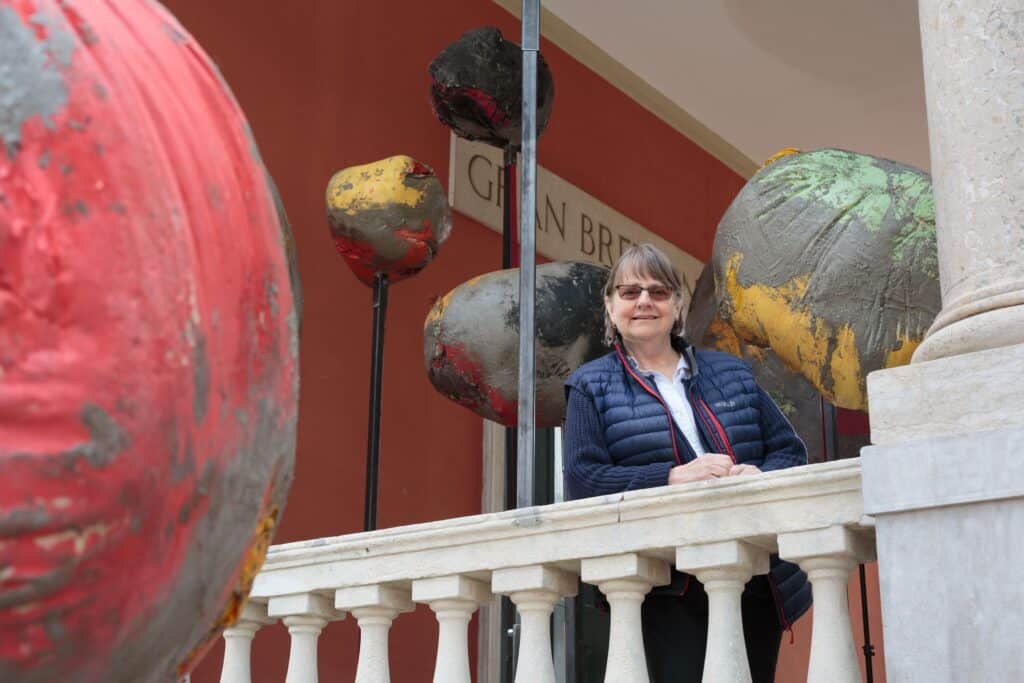
ARTIST ROOMS: Phyllida Barlow, the latest in this series of free displays at Tate Modern, opens to the public today. It brings together a selection of Barlow’s celebrated large-scale sculptures as well as over 30 works on paper made across her sixty-year career.
British artist Phyllida Barlow (b.1944) is renowned for constructing unwieldy, sprawling installations out of simple DIY materials. Some of her sculptures are loosely based on everyday household objects and familiar structures such as houses, stages and shelters, turned into strange and abstract versions of themselves. These interrupt the exhibition space, encouraging visitors to discover hidden details and unexpected viewpoints as they navigate their way around each construction. Devised in close collaboration with the artist, Tate Modern’s new display brings together Barlow’s sculptures, installations and drawings. Highlights include Object for the television 1994, the only surviving work from Barlow’s 1990s series Objects for…, as well as major installations such as untitled: brokenstage/hangingcontainer, 2012/2013 2012?3 and untitled: upturnedhouse2, 2012 2012.
Since the late 1960s, Barlow has been fascinated by how materials can be manipulated and handled. She experiments with surfaces and textures by cutting, sawing, breaking, folding or covering. Her works challenge traditional sculptural values with their painterly surfaces and seemingly haphazard appearance and sometimes look as if they might fall over at any moment. This sense of uneasy energy is a key element of her work: the tangled, organic form of untitled: torque, 2015 2015 looks as if it might start wiggling and swaying on its metal perch. Though their construction may seem improvised, Barlow’s sculptures are actually the result of long processes of reflection and deliberate composition. The display at Tate Modern also features untitled: awnings, 2012 2012, made up of seven roofs or shelters, draped festively in colourful fabrics that introduce a playful sense of theatrics as they jut out from the wall and lean towards the viewer.
Most of Barlow’s early works have been destroyed due to their site-specific and ephemeral nature. For instance, her Objects for… were conceived as a series of temporary interventions in domestic or public settings: a way to disrupt space by introducing sculptures as “uninvited guests”. Everyday items were paired with bulky hand-made forms: objects such as pianos, ironing boards and canteen tables acted as unexpected plinths for her unruly sculptures. The shape added to the TV set in Object for the television 1994, a rare work from the 1990s, exemplifies how Barlow plays with the familiar by making it comical and absurd.
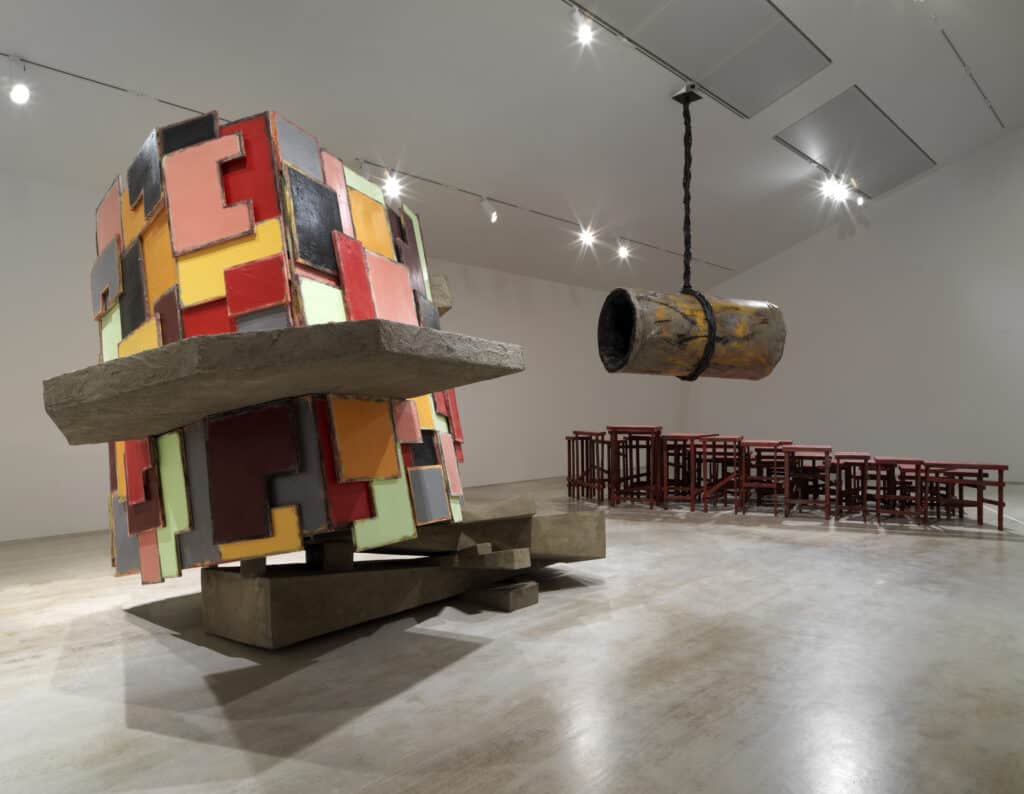
Barlow’s sculptures are shown here alongside a selection of works on paper made throughout her career. Drawing and painting are important elements in Barlow’s artistic process and closely relate to her work in sculpture, however, the artist also considers works on paper as artworks in their own right. Described by Barlow as “quick, intimate, open to change and spontaneous decision, and irrational changes of mind and direction”, they represent the range of her ideas around energy, layering and juxtaposition such as in the 2015 untitled: black series. This display draws from ARTIST ROOMS, a touring collection of international modern and contemporary art presented in solo exhibitions of individual artists. Its national programme reaches audiences across the UK and is developed through local partnerships. It is managed by Tate and National Galleries of Scotland with the support of Art Fund, Henry Moore Foundation and using public funding by the National Lottery through Arts Council England and Creative Scotland. Phyllida Barlow follows previous ARTIST ROOMS exhibitions at Tate Modern including Ed Ruscha in 2019, Jenny Holzer in 2018, Bruce Nauman in 2017 and Louise Bourgeois in 2016. ARTIST ROOMS: Phyllida Barlow is curated by Valentina Ravaglia, Curator, Displays and International Art with Helen O’Malley, Assistant Curator, and Amy Emmerson Martin, Assistant Curator, Tate.
About the Artist
Phyllida Barlow was born in 1944 in Newcastle upon Tyne, England. She lives and works in London.
For more than 50 years, British artist Phyllida Barlow has taken inspiration from her surroundings to create imposing installations that can be at once menacing and playful. She creates anti-monumental sculptures from inexpensive, low-grade materials such as cardboard, fabric, plywood, polystyrene, scrim and cement.
These constructions are often painted in industrial or vibrant colours, the seams of their construction left at times visible, revealing the means of their making.
Barlow’s restless invented forms stretch the limits of mass, volume and height as they block, straddle and balance precariously. The audience is challenged into a new relationship with the sculptural object, the gallery environment and the world beyond.
Barlow has exhibited extensively across institutions internationally including the recent major solo exhibition: Phyllida Barlow. frontier at Haus der Kunst, Munich; cul-de-sac at The Royal Academy of Arts, London (2019); Phyllida Barlow. folly, at La Biennale di Venezia, British Pavilion, Venice (2017); ARTIST ROOMS. Phyllida Barlow at Turner Contemporary, Margate (2017); demo at Kunsthalle Zürich, Zurich (2016); tryst at the Nasher Sculpture Center, Dallas (2015); set at the Fruitmarket Gallery in Edinburgh (2015); dock the Duveen Commission at Tate Britain, London (2014). Barlow has just been awarded the Niedersächsische Sparkassenstiftung’s 2022 Kurt Schwitters Prize.

